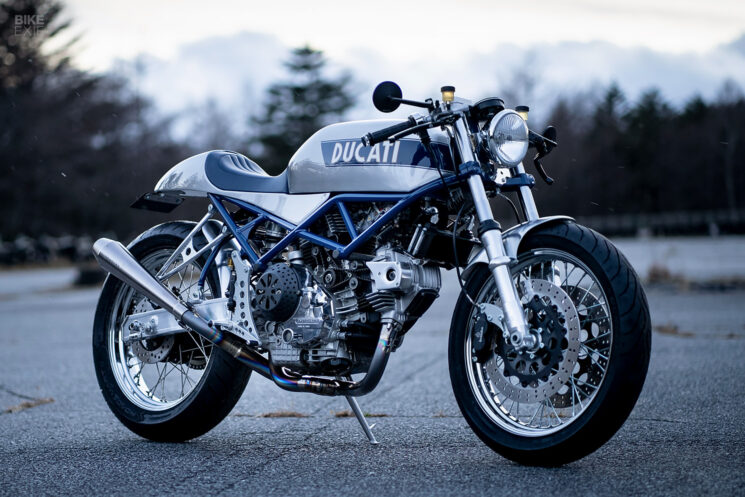
On the first weekend of December each year, the Pacifico Yokohama convention center is filled to the brim with highly imaginative machines for the Yokohama Hot Rod Custom Show. There’s a whole lot going on—from crazy engineering to retina-searing paint jobs. But one Japanese custom builder stands out for entirely different reasons.
Shiro Nakajima, otherwise known as 46Works, wows year after year with his tastefully restrained racing-inspired customs. A trained engineer and former boss of the Japanese restomod powerhouse Ritmo Sereno, Nakajima-san has a knack for combining Japanese craftsmanship with European style. That philosophy is on full display in this stylish Ducati Monster M900 racer.

Shiro built the Ducati on commission, with an open brief that left every decision up to him—including the choice of donor bike. So he picked a 1994 Ducati Monster M900 and transformed it into a B-road weapon in his signature style.
Like most artisans, Shiro is heavily influenced by his surroundings. He lives and works in a stunning wooden building, set against the foothills of the Yatsugatake Mountains, where he builds everything from furniture to bikes and cars. His weekends are spent on the myriad winding roads that surround his home, or at the Tsukuba racing circuit a few hours away—so good handling ranks high on his list of must-haves.
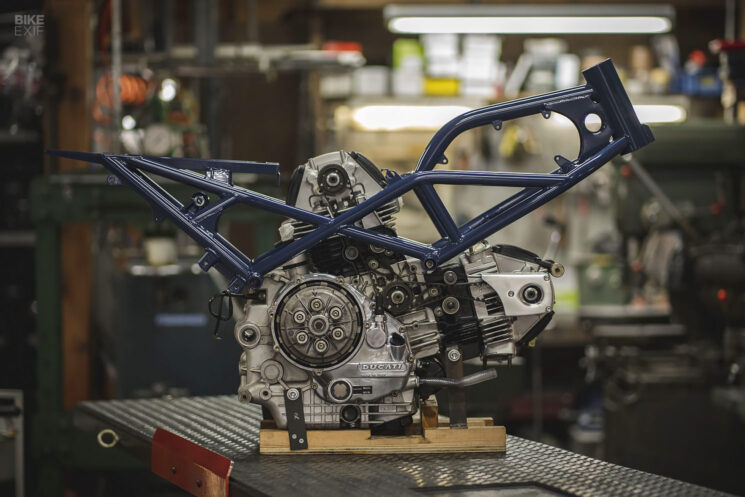
“The Ducati M900 is a standard naked bike with the frame from a liquid-cooled supersport,” says Shiro. “Because of its high stiffness and geometry, it can feel unwieldy when riding at practical speeds on public mountain roads. So I decided to modify the frame.”
Shiro is, of course, being modest; his work on the Ducati’s trellis frame is less modification and more reengineering. The center section is mostly original, but the front end has been rebuilt to reduce lateral rigidity. It now features a central backbone, with the steering head moved forward by 10 mm and adjusted by one degree.
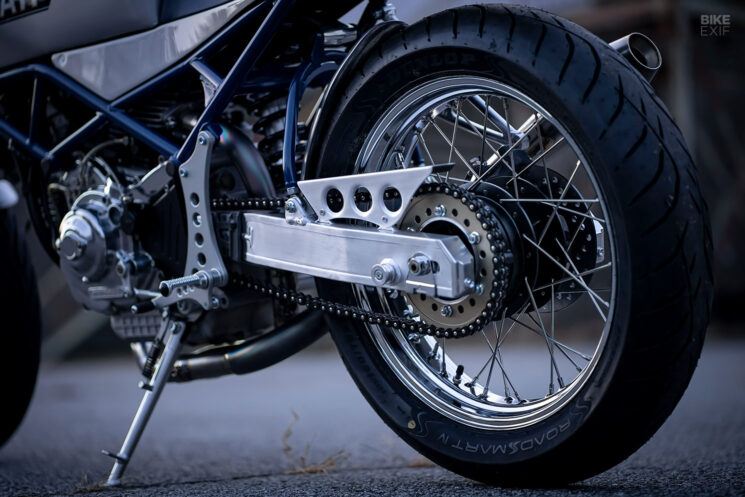
A set of Ceriani GP replica forks adorn the front of the Monster, tuned to suit the bike’s intended usage. Shiro mounted them with a Kawasaki lower yoke, before machining a custom top yoke.
Aiming for a 70s race bike feel, Shiro ditched the Monster’s 17” alloy hoops for a pair of 18” laced wheels, built using off-the-shelf rims and modified Yamaha hubs. The OEM Brembo calipers were refurbished, repainted, and mounted on handmade brackets. Out back, Shiro modified the original swingarm to accommodate the bigger wheel and added an Öhlins shock.
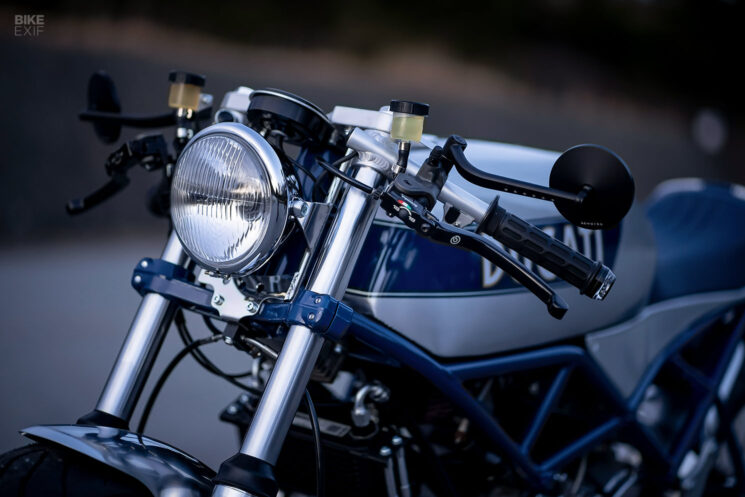
Tucked up tightly against the new top yoke is a neatly integrated Motogadget speedo. A Bates-style headlight sits just below it, held up by a custom-made support. Custom clip-ons sport a Tomaselli throttle, Brembo controls, and Motogadget bar-end turn signals.
The mirrors are the result of a collaboration between 46Works and the Japanese parts brand Tanax, while the left-hand side switchgear is a custom part. Shiro also fabricated the bike’s fenders, chain guard, and rear-set assemblies.
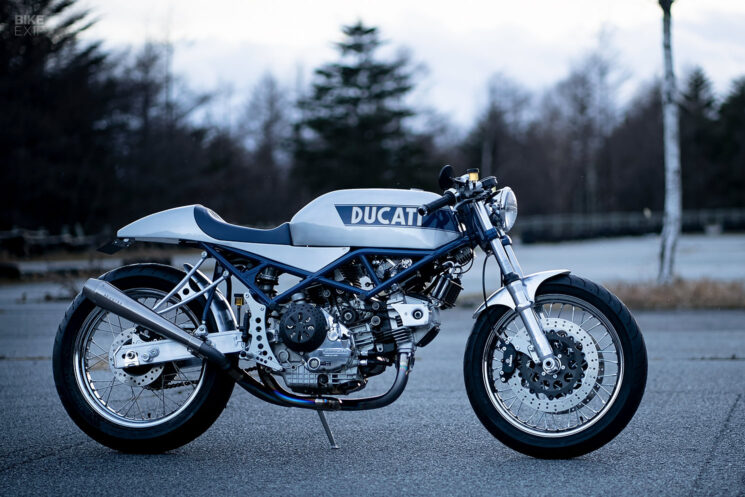
The Monster’s revised frame layout gave Shiro the freedom to reimagine its silhouette with handmade aluminum bodywork. “Many Ducati-based custom bikes with trellis frames have the tank and seat mounted too high to achieve the best visual balance,” he explains. “I designed the M900 from the frame up to maintain a low, horizontal line—without lowering the suspension.”
“The fact that the seating position is almost the same as that of the stock M900 is a result of an emphasis on rideability.”
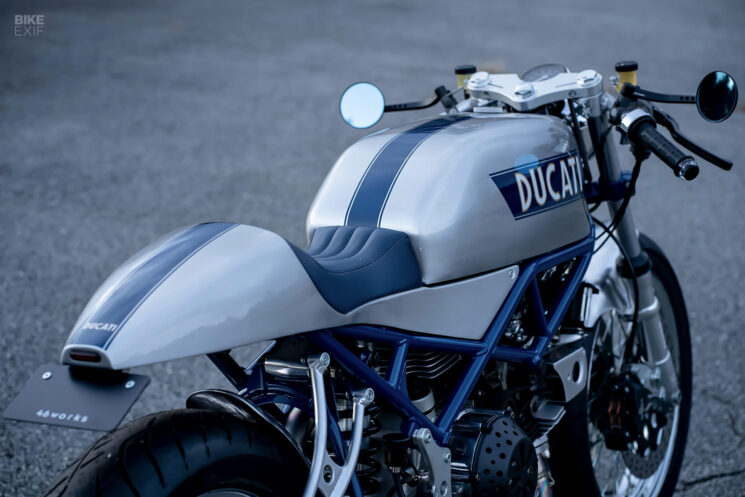
For the Monster’s livery, Shiro took inspiration from the 1970s Ducati 750 Sport. But rather than painting the bike silver, he let the aluminum surfaces shine. “Bringing the aluminum skin to the surface meant that no putty could be used,” he adds. “So I spent a lot of time (and nerves) on the sheet metal work.”
Drops Design Works added the period-correct Ducati logo, graphics, and clear coat, while Razzle Dazzle covered the seat in a matching blue material.
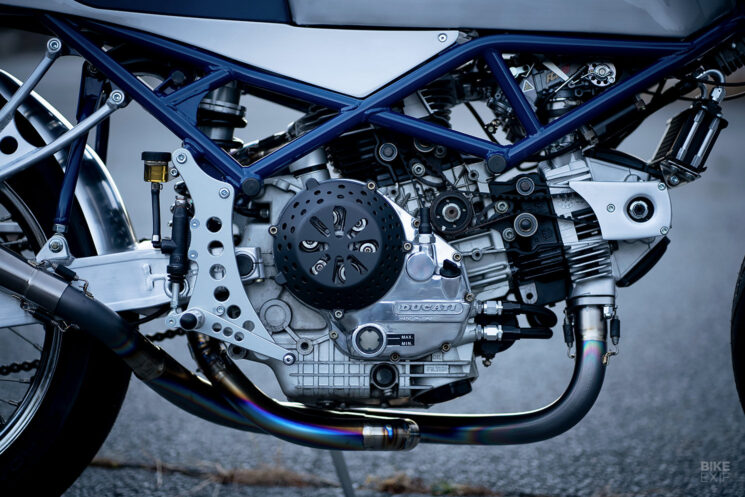
Shiro didn’t neglect the air-cooled Ducati L-twin motor either. The whole power plant was stripped, cleaned, overhauled, and put back together with fresh sundries. The exterior was blasted before certain parts were polished or Cerakoted.
Hiding under the fuel tank are a pair of Keihin FCR carbs with pod filters. The rear cylinder is attached to a regular ‘horizontal’ carb, while the rear cylinder uses a downdraught version. The oil cooler is from Setrab, and the stunning cutaway belt covers are handmade aluminum items.
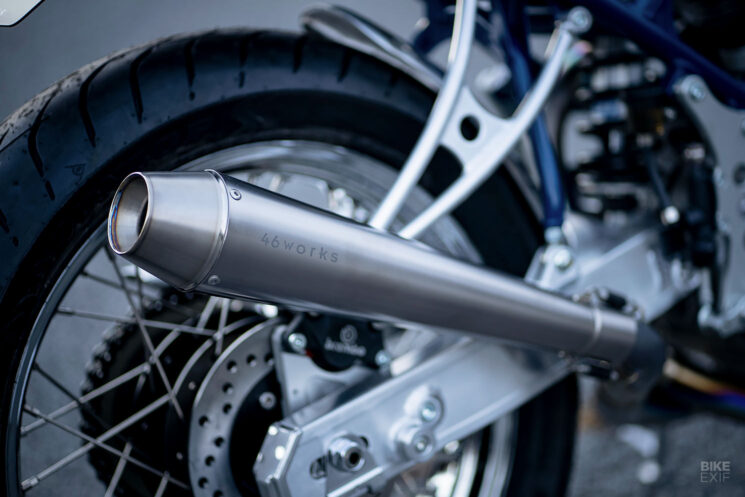
This stunning Ducati Monster racer is finished off with another signature 46Works touch—a sand-bent two-into-one titanium exhaust system, terminating in a handmade titanium muffler. “The stock exhaust headers are not equal in length,” explains Shiro, “but I wanted to route the two headers so that they would be as equal in length as possible.”
“I also used a layout that would allow me to change the oil filter and oil without having to remove the exhaust. It was difficult to get the hand-bent pipe through the narrow spaces.”
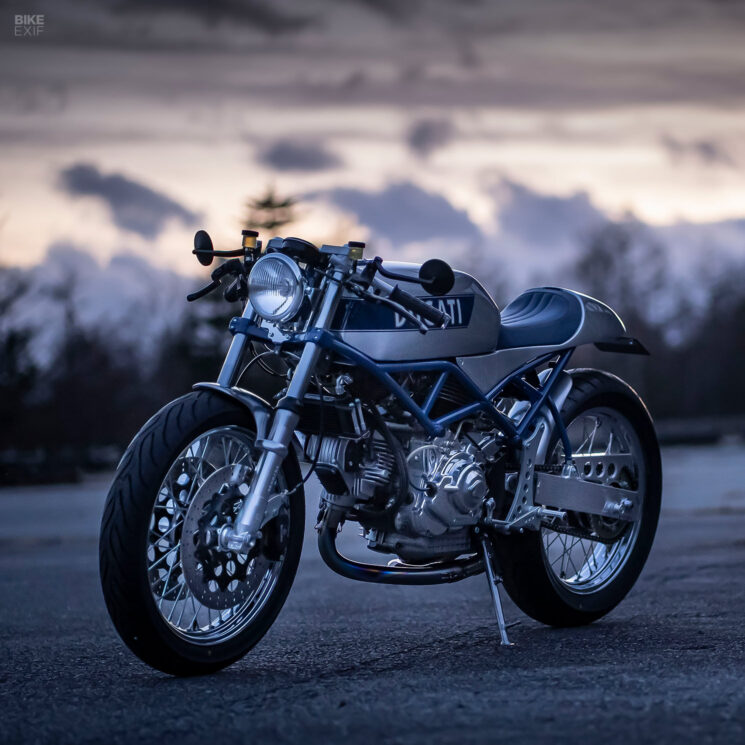
Shiro concludes by admitting that a 90s Ducati Monster M900 is hardly a rare or expensive donor bike, but that he’s happy with the result he’s achieved. And so he should be… this handcrafted racer has transcended its humble beginnings with a look that harks back to the 70s, and a build that’ll satisfy the most discerning of backroad weekend warriors.
46Works | Facebook | Instagram
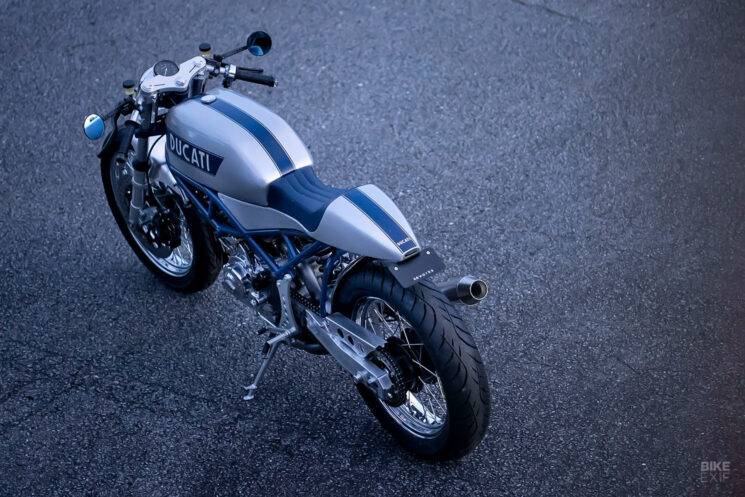
from Bike EXIF https://ift.tt/3H4YoWD
No comments:
Post a Comment